Hatiora succulent - a perennial shrub of the Cactus family. The plant was brought from Brazilian rainforests, where it grows in the natural environment up to 2 meters. At present, 4 types of havers are known that are suitable for growing at home.
With regular care the hator (in the photo) reaches half a meter at home and is popular with gardeners for the unusual shape of the stems, the splendor of flowering and the absence of thorns. Subject to simple simple rules, the flower will delight its master for more than one year, since in comfortable conditions it can grow for a long time.
Content
Is it possible to keep a hator at home, signs and superstitions
According to popular beliefs, the haator should not be kept at home. There is a belief that this plant helps to leave men at home, so families can break up. The drooping stems of the flower are a symbol of female loneliness, so some women do not risk bringing the hator to the house.
It is believed that succulent grows well in the house where there are regular quarrels and conflicts, which leads to drunkenness of the male half of the family. The landlord becomes irritable and angry. In addition, the flower helps to reduce sexual energy, so the passion between the spouses subsides, which can lead to divorce.
It is not customary to give a non-blooming hator, as relations with the gifted will deteriorate sharply.
Some cactus owners claim this succulent is poisonous. However, such information is not confirmed by anything, and it is not in the list of poisonous plants. However, to be calm for children and pets, the flower must be kept out of their reach.
In addition, there are also opposing, good beliefs:
- The unexpected flowering of a cactus after a long period of dormancy predicts good changes.
- Cactus flowering for a young girl portends a fast wedding.
- The flowering of the hatoria for a married woman symbolizes the appearance of children. The color of the flowers determines the sex of the unborn child: dark flowers - to the boy, light - to the girl.
- If the succulent has bloomed in a complete family, then this is in abundance or good income.
- Placing a flower in the hallway protects the owners from negative energy and the bad intentions of people entering the house.
- The blooming hatiora, presented as a gift, brings prosperity to the house.
Despite these signs, the flower is often kept at home, as it pleases its owners with lush flowering.
Characteristics of Hatoria and Species Diversity
Hatiora has a fibrous superficial root system and is distinguished by the absence of leaves in the usual sense. The stems of the plant consist of small individual evergreen segments on which roots are formed, allowing the plant to absorb moisture from the air. Different types of plants have different shapes of segments: flat, pin-shaped, cylindrical.
The crown of the succulent is sprawling and resembles a skeleton, so one of the names of the haators is dancing bones.At home, the flower can reach half a meter in height. Due to the strong branching of the shoots, the plant needs support.
Only a few types of hatiora are grown at home:
- Hatiora is pink. The most striking representative of the Cactus with drooping shoots. Each segment is ribbed, green with several pink stains, covered with small white roots. The length of each segment is 25 mm. At the ends of the shoots, beautiful pink buds are formed, from which tubular flowers up to 4 cm in diameter later bloom.
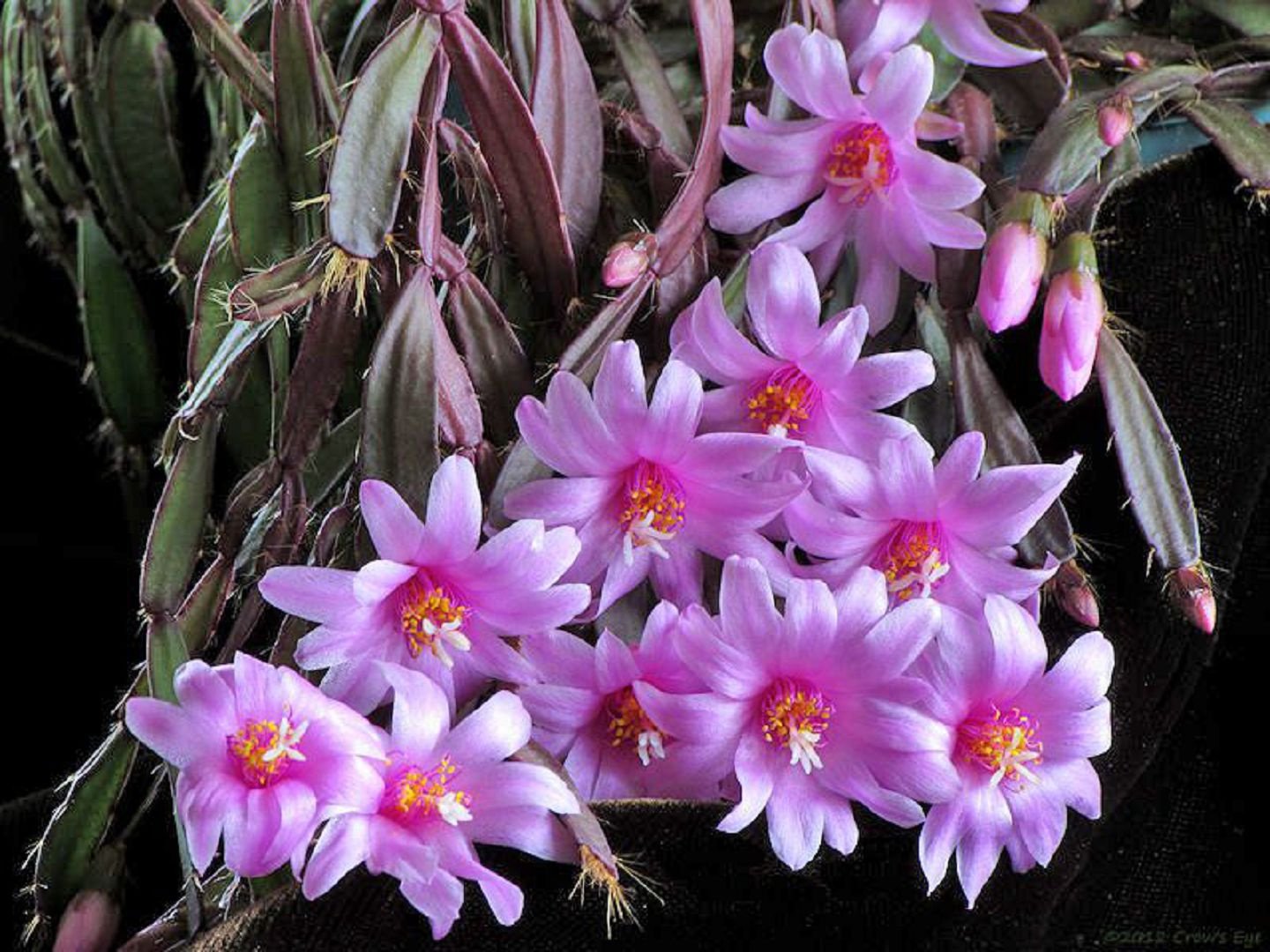
Hatiora pink - Hatiora Grezer. Has drooping shoots, consisting of bright green segments up to 25 mm, which over time turn brown at the base. The flowers are bright, large pink or bright scarlet.
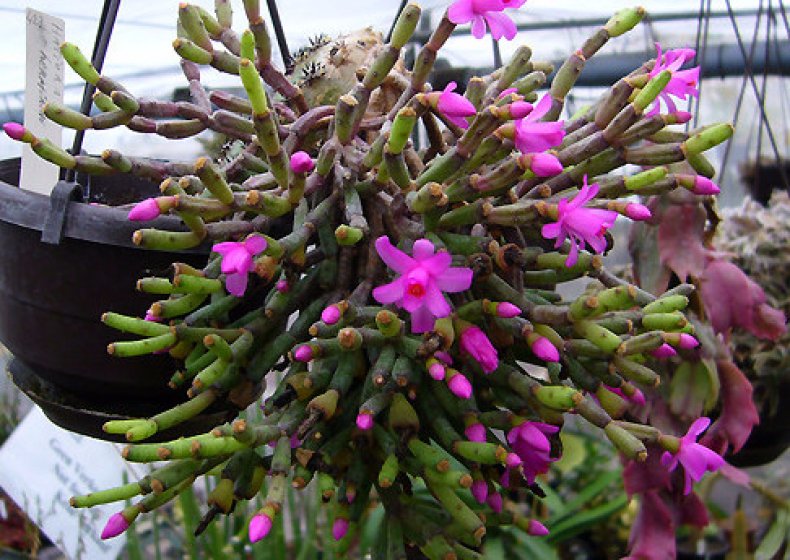
Hatiora Grezer - Hatiora is saltwater. The shoots are erect, consist of segments of a cylindrical shape of bright green color, densely branching. Each lobe reaches 28 mm. At the ends of the shoots, bright yellow flowers develop in the form of bells.
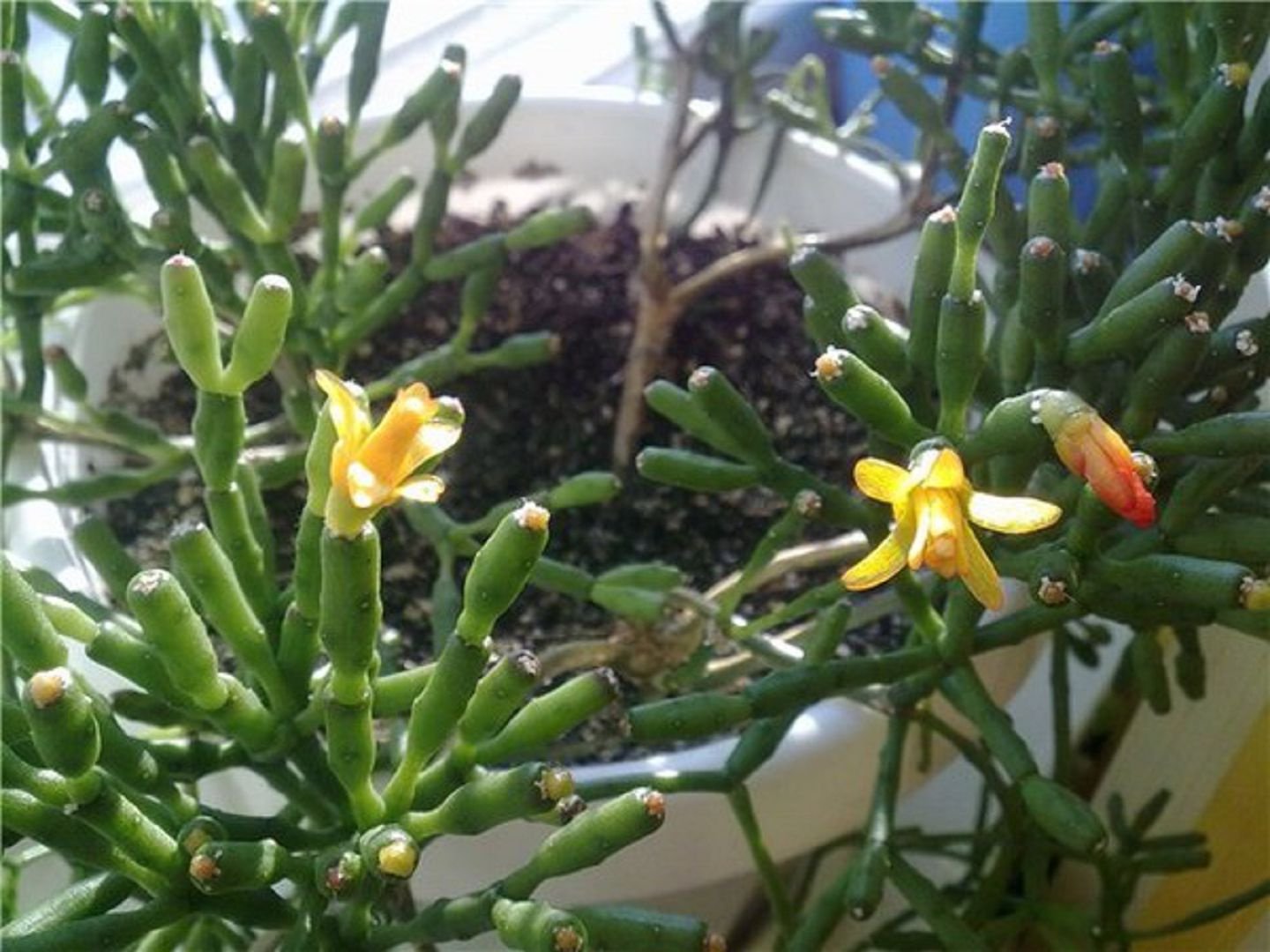
Hatiora saltwater - Hatiora Germina. This epiphytic succulent is distinguished by short shoots consisting of small cylindrical segments (up to 5 cm) with small notches of dark green shades. Flowers with a diameter of 2 to 2.5 cm have a bright pink color. The cactus itself reaches a height of 30 cm.
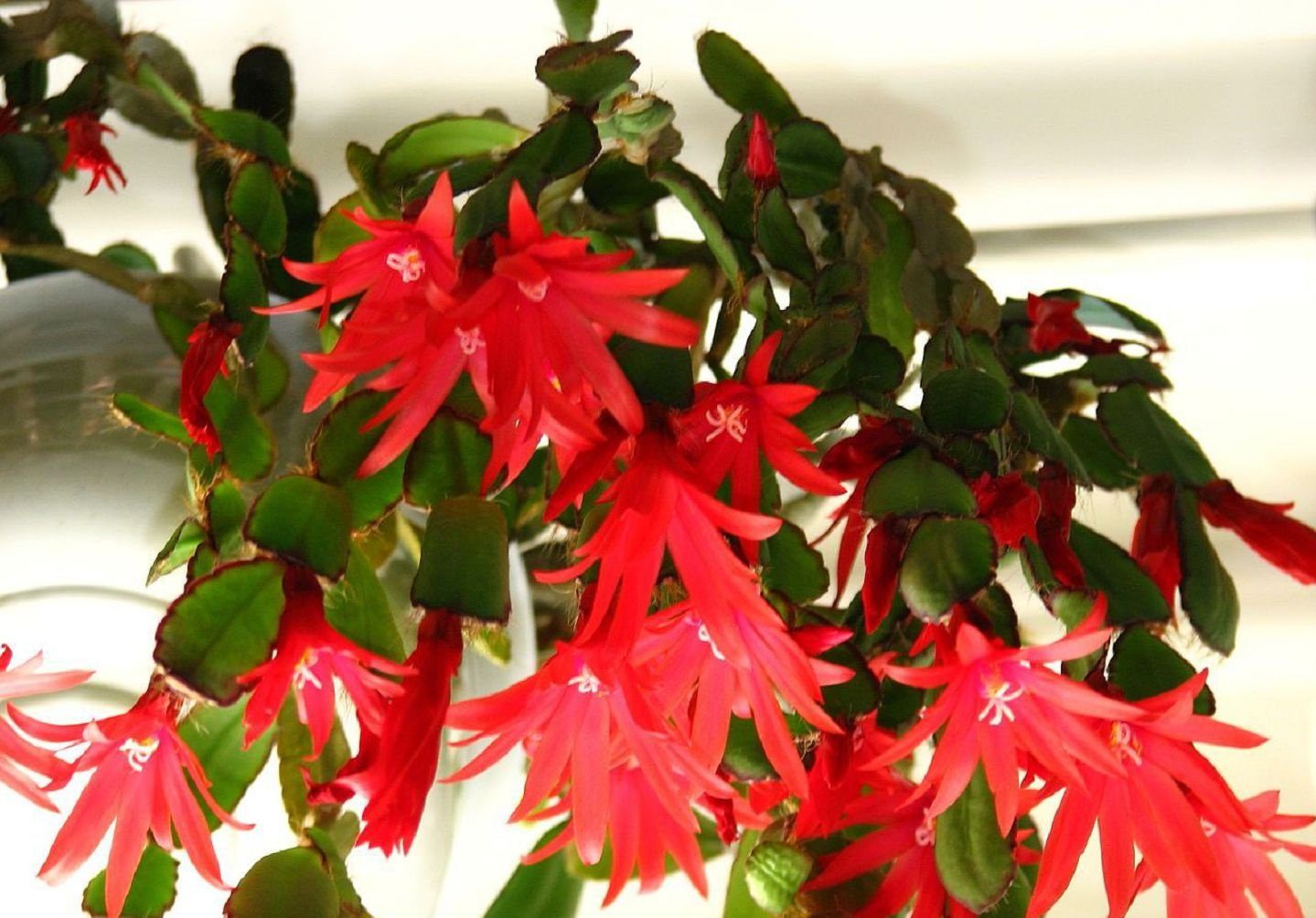
Hatiora Germina - Hathior salicorniform. Succulent in the form of a bush with hanging shoots, consisting of segments in the shape of a club up to 5 cm long. An adult plant reaches 50 cm in height. The buds are bright yellow in the form of bells 1 cm long. As the plant grows, its shoots gradually stiffen and turn brown.
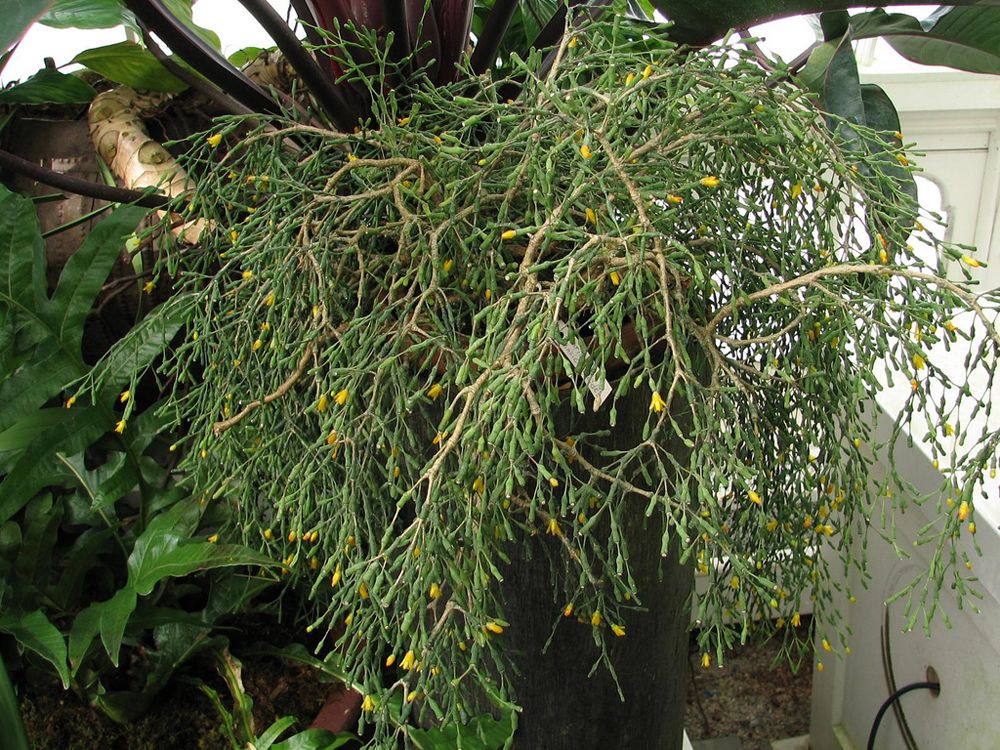
Hachior salicorniform
Secrets and difficulties of taking care of a hator at home
In order for the hator to delight with its lush flowering and develop normally at home, it is necessary to provide her with good care.
Lighting
The cactus does not tolerate bright sunlight, so it must be kept in places with diffused light, but well lit. However, it is not recommended to place it on windows facing the north side, as this can adversely affect flowering. In the presence of a shaded balcony, the flower can be carried out in the summer in the air.
Temperature and humidity
Compliance with the temperature regime and maintaining optimal humidity for the hator - the key to its proper development and lush flowering. Therefore, you should monitor the room temperature very carefully, since the succulent does not like sudden changes in temperature.
Watering and feeding
Regular watering and fertilizing the plant with mineral fertilizers is an important condition for proper care. For irrigation use settled water at room temperature or warm boiled. However, excessive watering can lead to root rot and the development of bacterial infections.
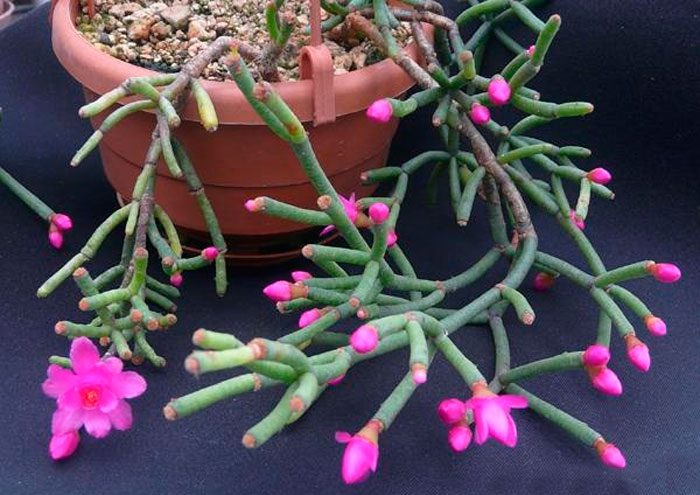
Plant nutrition is carried out depending on the growth phase of the hator.During the rapid formation of shoots, it is necessary to apply nitrogen fertilizers twice a week, and during the period of abundant flowering, use potassium top dressing.
Diseases and Pests
Bacterial and fungal diseases often affect the hator. In order to recognize a disease in a plant, a thorough examination should be made.
When a succulent is affected by a bacterial infection, rapidly spreading wet spots appear on the segments. If the use of antibacterial agents does not bring results, then infected shoots should be removed. With a large infection of the flower, it is necessary to take a healthy segment and grow a new bush from it.
Phytophthora and fusariosis are the most common diseases of perennials. Late blight begins in the plant due to constant abundant watering, leading to root rot. In this case, a flower is affected by this disease when it is transplanted into an already infected soil mixture.
The sick succulent wilts, its bright color fades. To cure the plant, it is treated with a fungicide solution. With mechanical damage to the shoots, the cactus can get sick with fusarium, which is also treated with fungicidal drugs.
In addition to fungal and bacterial diseases, various pests can affect hatorioux:
- scale shield;
- whitefly;
- spider mite;
- worm.
How to propagate and transplant a room flower
The main type of propagation of indoor flower is cuttings by segments. It should be remembered that the segments that are subject to cuttings should be torn off from the shoot manually, as if twisting, without using any tools.
Consider a step-by-step algorithm for rooting the cuttings:
- Break off the selected stem with several lobes (2-3) from the adult plant.
- The base of the broken off cuttings must be dried and processed with crushed coal.
- Prepare a peat-sand mixture and plant cuttings in it for rooting.
- Water the planted material sparingly.
- Place containers with planted cuttings in a greenhouse, in which to maintain a temperature of 20 to 24 degrees, while regularly ventilating.
- After rooting for a month, a young plant is planted in a permanent pot.
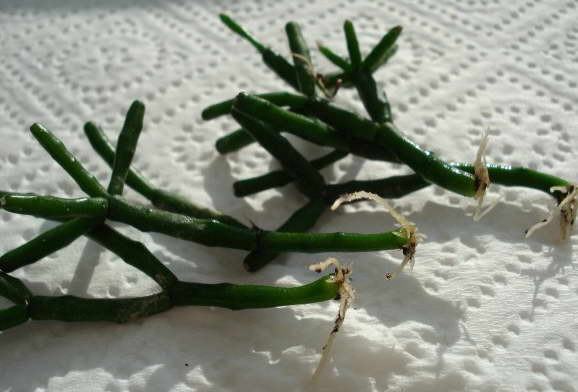
Sometimes cuttings are placed in containers with water, previously treated with a Kornevin solution. After a while, they start the roots.
Another way of propagating perennial is sowing seeds for seedlings. However, for such a method to give a result, it is necessary to have experience in breeding. Seeds are sown very quickly in moist soil, so as not to lose germination. After sowing, a certain temperature (+ 20-25 degrees) and humidity in the greenhouse are constantly maintained.
Common Growing Questions
Hatiora is a wonderful epiphytic perennial with beautiful bell flowers. Abundant flowering largely depends on the proper care of the plant.

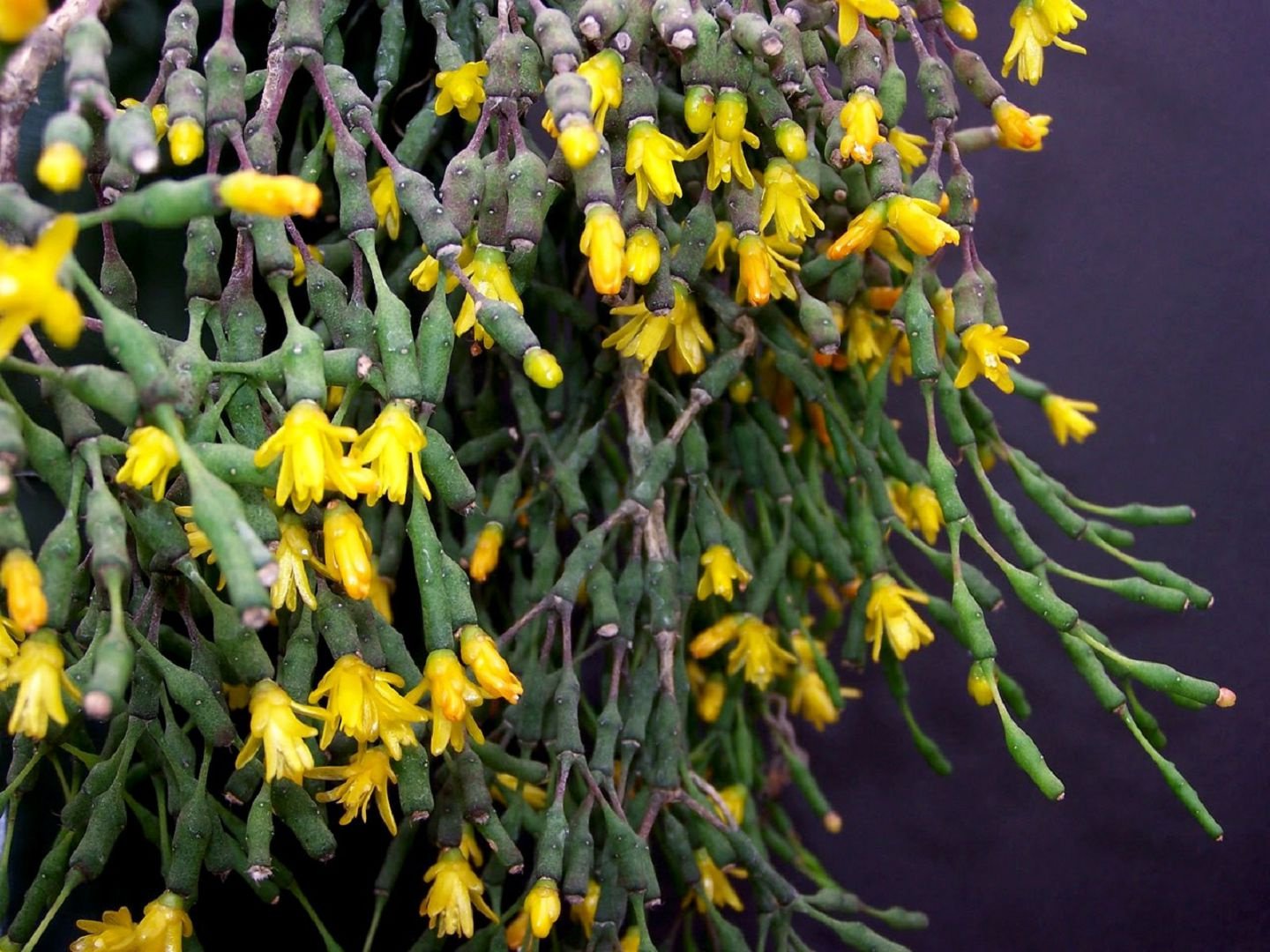
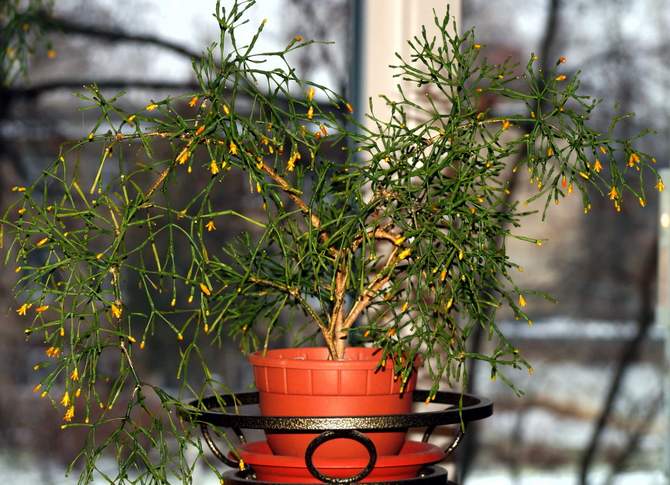
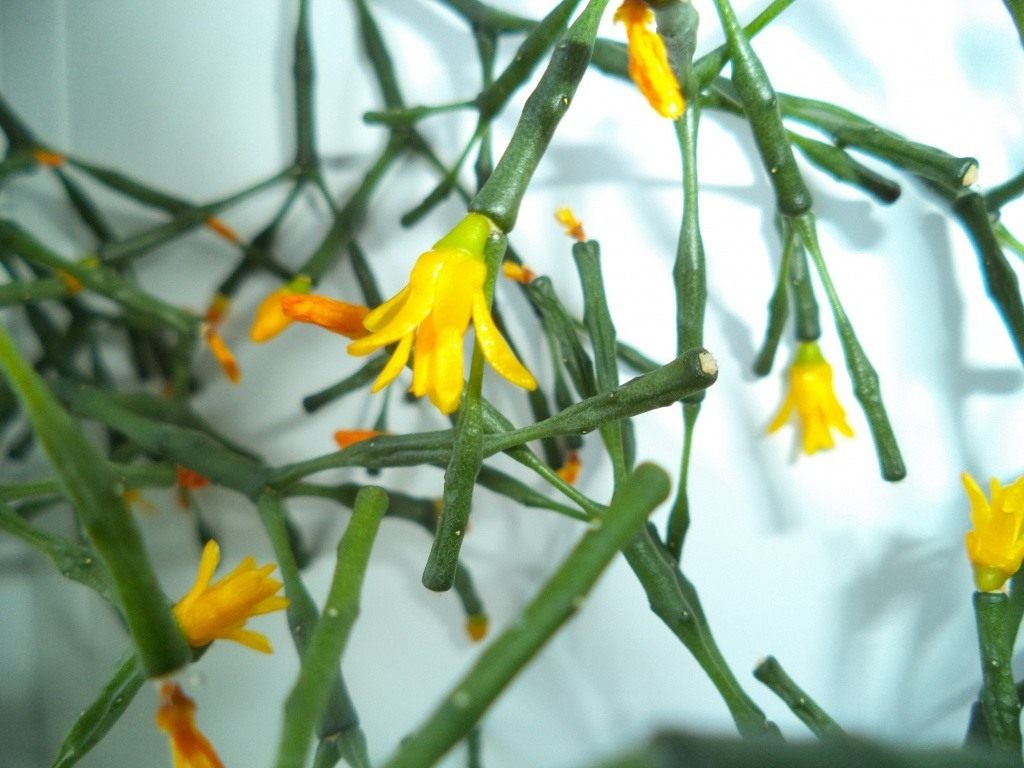



 10 beautiful annuals that bloom all summer
10 beautiful annuals that bloom all summer Sow in the ground, without seedlings: 10 beautiful and unpretentious flowers
Sow in the ground, without seedlings: 10 beautiful and unpretentious flowers Platicodon planting and outdoor care
Platicodon planting and outdoor care Hosta - planting and care in the open ground in the Urals
Hosta - planting and care in the open ground in the Urals